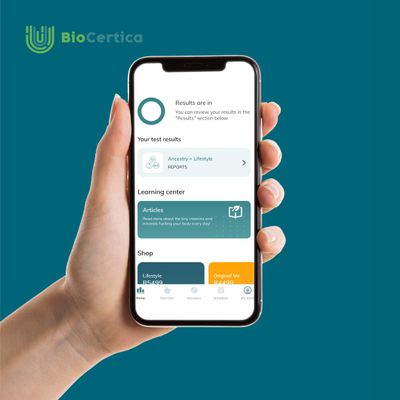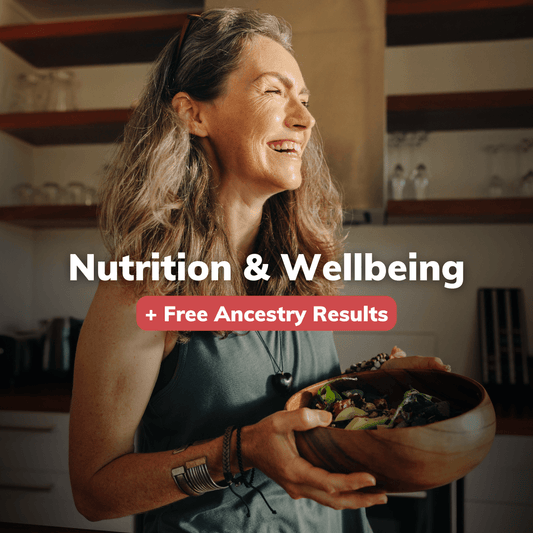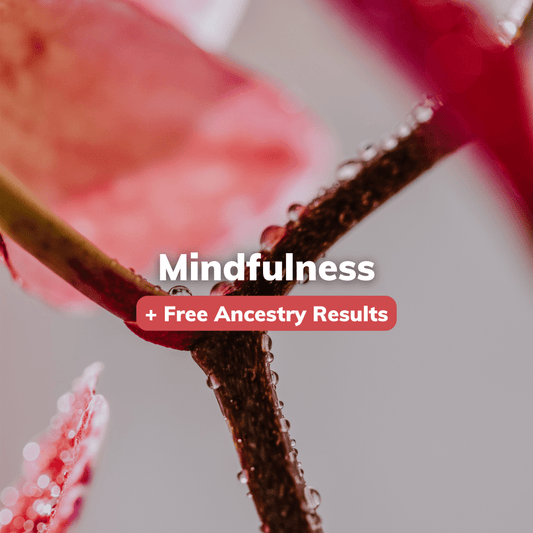
How are genomics reports generated?
BioCertica Content TeamWritten by: Nermin Đuzić, M.Sc. in Genetics, Content Specialist
m (Figure 1)? We mentioned all steps we follow to include certain SNPs in the results section. The next step is the generation of results or genomics reports.

Figure 1: Example of results
In the Figure above, we can see an example of results for average/normal vitamin D levels according to SNPs found on the FADS2, FADS1, and NOS3 genes. However, it is a stepwise process to obtain such results after SNPs selection, and we will explain it below.
Recently, we explained that some traits and conditions are determined by a single gene, while multiple genes and their alleles determine some complex traits. When many genes impact the final phenotype or manifestation of a trait or condition, that trait is a complex or quantitative trait and can be assumed to follow the infinitesimal genetic model.
In our case, we apply the simplified additive genetic model to estimate the relative risk for any given trait [1]. This model assigns uniform effect weights to every SNP for a given trait and estimates the relative risk by calculating index values across all SNPs for a given trait.
Currently, our genetic results are generated using the simplified additive genetic model for 75 traits where relative index score (risk score) is calculated for each trait. It is done in the following manner:
- For every individual/user, we extract genotype data for SNPs based on which we generate results. An example of a user’s genotype data is shown in Table 1 below. There we have information on which allele is present in the user’s DNA for SNP of interest on the particular gene of interest.
Table 1: User’s genotype data
|
dbSNP_rs_ID |
Genotype |
Allele_A |
Allele_B |
Ref_Allele |
Gene |
|
rs1031107 |
TT |
T |
C |
T |
SLFN13 |
|
rs10096633 |
CC |
T |
C |
C |
LPL |
|
… |
… |
… |
… |
… |
… |
|
rs10384 |
GG |
A |
G |
G |
PSMD5 |
|
rs10880019 |
AA |
A |
G |
G |
PHLDA1 |
|
rs7501331 |
TC |
T |
C |
C |
BCO1 |
|
rs12934922 |
AT |
A |
T |
A |
BCO1 |
- For every trait/condition we have specified a list of SNPs with alleles that have been associated with a given trait in terms of increasing or decreasing predisposition for it. More precisely, we have a lifestyle & trait package composed of 8 areas we test for. Each area has its traits and SNPs we analyze (Table 2). Moreover, table 3 shows what the Nutrition package contains as an example of traits we test for.
Table 2: Package and traits we test for
|
Lifestyle package |
Number of components/traits |
Number of SNPs |
|
Nutrition |
12 |
22 |
|
Well-being |
9 |
24 |
|
Fitness |
8 |
15 |
|
Skin care |
7 |
31 |
|
Mental health |
9 |
27 |
|
Weight management |
6 |
9 |
|
Cardiovascular health |
9 |
35 |
|
Traits |
9 |
25 |
Table 3: Components/traits in Nutrition package
|
Component / trait |
|
Antioxidants |
|
Calcium |
|
Folate |
|
Iron overload tolerance |
|
Iron |
|
Probiotic |
|
Vitamin A |
|
Vitamin B12 |
|
Vitamin B6 |
|
Vitamin C |
|
Vitamin D |
|
Vitamin E |
- Generating data for individual reports is done by combining individual genotype files (Table 1) with information from a predefined Lifestyle package (Table 2).
- We apply the simplified additive genetic model to estimate the relative index score for every trait by combining users' genotype data with a predefined list of SNPs for every given trait.
- The final step is categorizing these scores into the corresponding categories: increased, normal/average, and decreased levels, which are visualized in your results (Figure 1).
How to interpret results for a particular trait?
Finally, let’s see how some SNPs are related to the trait. Below are examples of SNPs and how they affect traits.
Table 4: Examples of SNPs and their association to traits
|
Gene |
SNP id |
Genotypes with risk alleles) |
Trait |
Phenotype effect |
|
MC4R |
rs12970134 |
AA; AG |
Ability to manage obesity |
Increase in weight and BMI |
|
MC4R |
rs17782313 |
CC; CT |
Ability to manage obesity |
Increase in weight and prone to obesity |
|
BCMO1 |
rs7501331 |
CT; TT |
Vitamin A deficiency |
Reduced ability to convert beta-carotene to vitamin A precursors |
More SNPs for the BCMO1 gene regulate vitamin A levels in our body and the ability to convert beta-carotene to vitamin A. If a person has a CT or TT genotype for one of these SNPs, they will have a reduced ability to convert beta-carotene. They may suffer from vitamin A deficiency and be more prone to conditions related to it. Besides these results, at BioCertica, we also provide actionable dietary recommendations one should follow to maintain overall health according to genetic testing results.
One of BioCertica’s future goals is to introduce genetic risk scores based on polygenic risk score (PRS) methodology, a more complex and reliable method for estimating genetic risk. You will be able to read more about it soon. Stay tuned!
References
- Riley, H. P. (1969). Definitions and Explanations: A Glossary of Genetics and Cytogenetics. Classical and Molecular. Rigomar Rieger, Arnd Michaelis, and Melvin M. Green. (first English edition). Springer-Verlag, New York, 1968. 508 pp., illus. $16.50. Science, 164(3879), 542-542.



